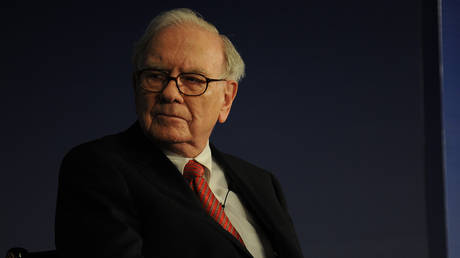The Quantum Era has Already Begun
The quantum computing leaders of tomorrow are building, and commercializing, today.


By the end of 2024, even casual observers of technology headlines could see the excitement building around quantum computing–a technology that represents a fundamental shift in how we process information, applying quantum physics to solve problems far beyond the reach of even the most powerful classical computers.
Among numerous other developments, in March 2024, Quantinuum announced a breakthrough in the ability to build a large-scale quantum computer. A month later, at the Quantum World Congress, IBM, Microsoft, and Boeing all announced major developments in their quantum research. Capping off the year, in December, Google unveiled its Willow processor, hailed as a significant achievement in the journey toward practical quantum computing. Mainstream enthusiasm was accelerating. [time-brightcove not-tgx=”true”]
Then came January, and the annual Consumer Electronics Show in Las Vegas, where Nvidia CEO Jensen Huang said on stage, in a room full of reporters, that he didn’t anticipate “very useful” quantum computing for another 15 to 30 years. Three months later, in front of a gathering of quantum leaders, he issued a course correction, but there was no doubt his commentary continued to spark deliberation across the industry and investors about where we are in the innovation trajectory for quantum computing and where we are going next.
While many people still believe we are three to five years out from true commercial viability for quantum computing, as participants in the process, we respectfully disagree. The quantum era is not 15 to 30 years away. It is not three to five. The truth is the quantum era has already begun.
There won’t be a light bulb moment
Perhaps this misalignment stems from how we’ve come to expect technology to arrive—with a big product reveal. For personal computing, it was the Apple II in 1977: the first truly consumer-ready PC. For the commercial internet, it was Netscape Navigator in 1994, which brought the web to millions of desktops and lit the fuse for a digital revolution. But quantum computing is not like these previous technological light bulb moments. Quantum computing’s evolution is less visible and more distributed.
You will not see a quantum computer for sale at Best Buy or a revolutionary app. The transformation will happen behind the scenes, embedded in the foundational systems of science, logistics, healthcare, and finance. Instead of a launch moment it will come with performance breakthroughs, solved problems, and enduring value creation.
Unless you are in the trenches working on quantum computers each day, it is hard to realize how far we have come. However, a look behind the scenes reveals this technology is now on the tipping point of delivering widespread industrial usefulness as commercial users have opened their eyes to its true value potential.
For instance, global pharmaceutical companies are advancing both disease research and the frontier of quantum-enabled drug discovery. And in automotive and aerospace, companies are using quantum computing to improve the performance of hydrogen fuel cell catalysts and electric batteries mobility. Companies like ours are currently using quantum hardware to generate truly random encryption keys—making systems more secure against today’s threats and tomorrow’s quantum-enabled ones.
These use cases are no longer just theoretical, they are real-world, commercially viable, value-creating initiatives. In aerospace, energy, financial services, and national security, quantum use cases are being developed not as moonshots, but as competitive tools. And in some cases, they are already outpacing traditional approaches.
If you define the start of the commercial era for a product as the moment that value creation has begun, that start date is already in the rearview mirror. The three examples above and countless others brought forward by this nascent industry are all creating value for commercial entities.
Both quantum software and hardware have been advancing at breakneck speed over the last 18 months—a pace that mirrors the early days of classical computing. Not long ago, many imagined that 100 qubit quantum computers were achievable within a decade. But earlier this year, Microsoft unveiled the world’s first quantum processor powered by topological qubits.
Governments around the world are taking notice and funding these efforts. According to the Center for Strategic & International Studies, China, Germany, the United Kingdom, the United States, and South Korea lead the world in public investments in quantum technology, but numerous other nations are funding initiatives as well, driving innovation and tangible results. Universities are launching quantum engineering programs, venture capital has begun to flow into the sector, workers are shifting toward the quantum space, and the commercial quantum computing ecosystem is rapidly taking shape.
In other words, despite those who say this technology’s time is not yet now, the fact is the quantum train is leaving the station. For developers, investors, and policymakers, hesitation to invest, test and adopt new technologies opens the door for competitors and adversaries to move ahead. Early adopters of quantum computing are already filing patents, building infrastructure, developing software platforms, and shaping standards. Sitting on the sidelines means giving up first-mover advantage in one of the most powerful technological breakthroughs of this century.
Quantum computing is not just a tool—it is a national capability. Countries that lead will attract the talent, secure the data, and define how this new technology is regulated, protected, and deployed. Those that lag in investing in quantum computing may find themselves playing catch-up in cybersecurity, energy modeling, drug development, and defense applications. This is not hypothetical, nor is it about a light bulb moment. It is happening now, and it has been ramping up over the past decade.
The quantum computing leaders of tomorrow are building, and commercializing, today. Others may continue to debate but the opportunity belongs to those who treat quantum as a strategy versus an eventuality. If you are running a business, building a research agenda, managing a portfolio, or setting national policy, now is the time to engage.









































































